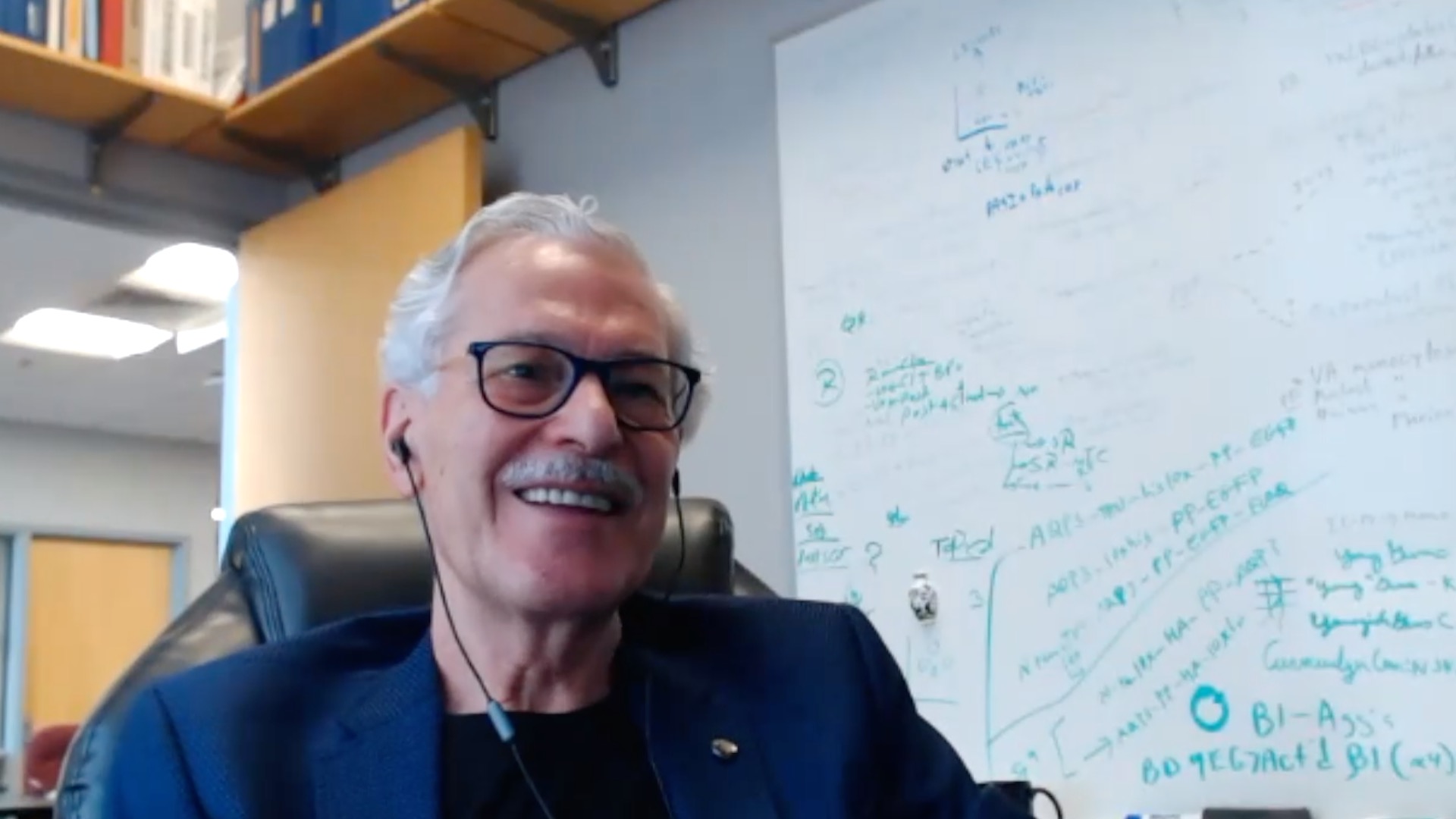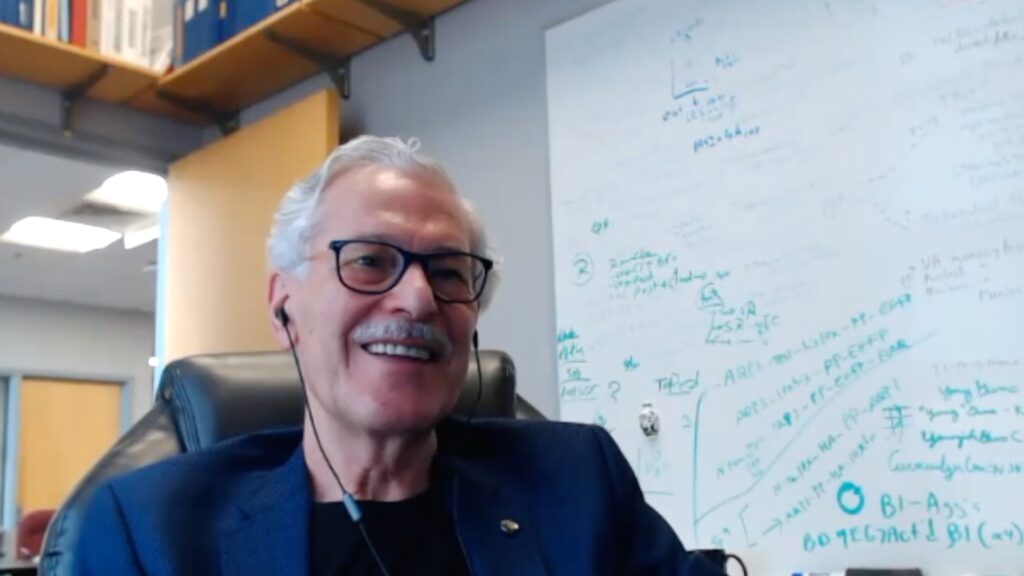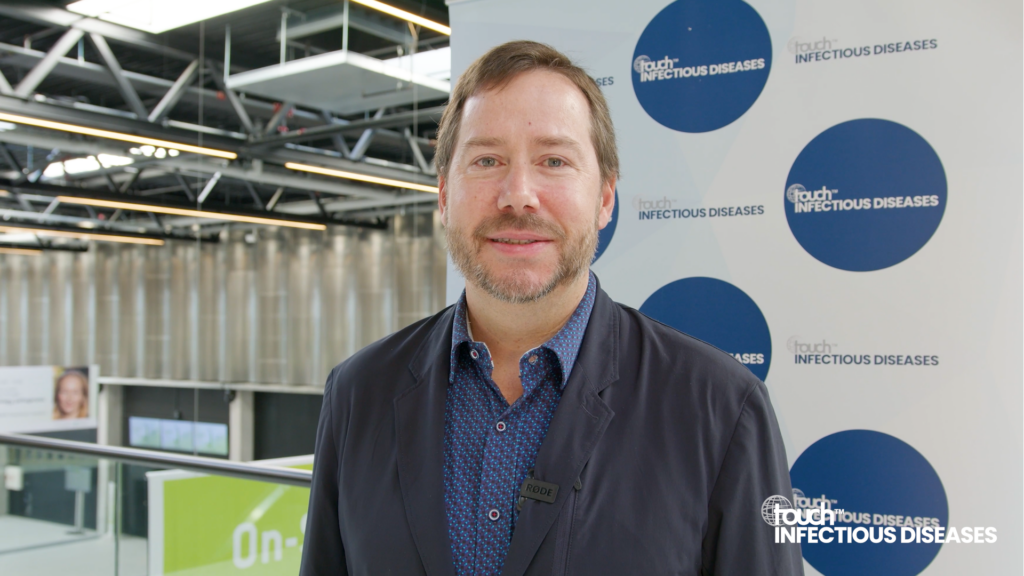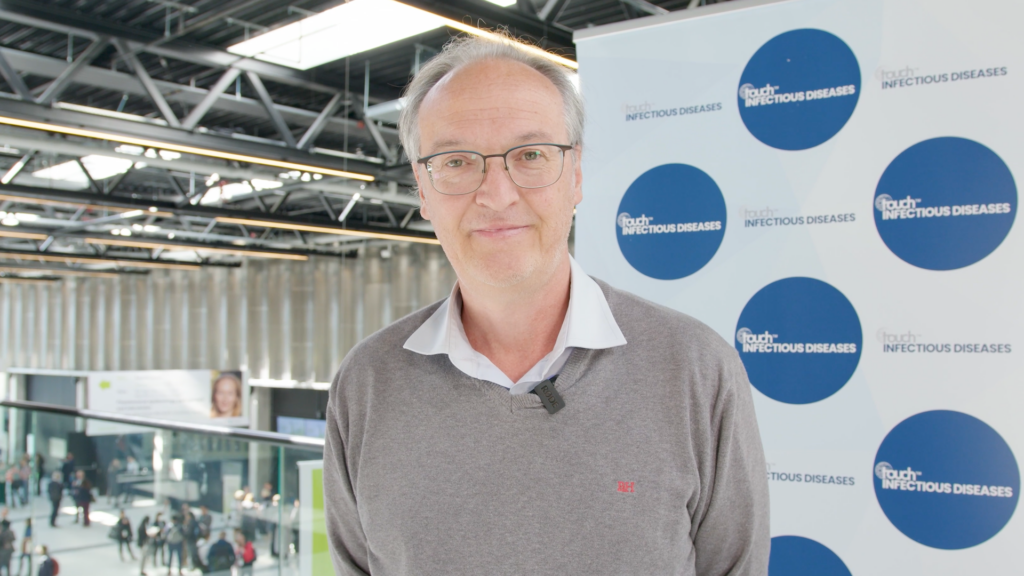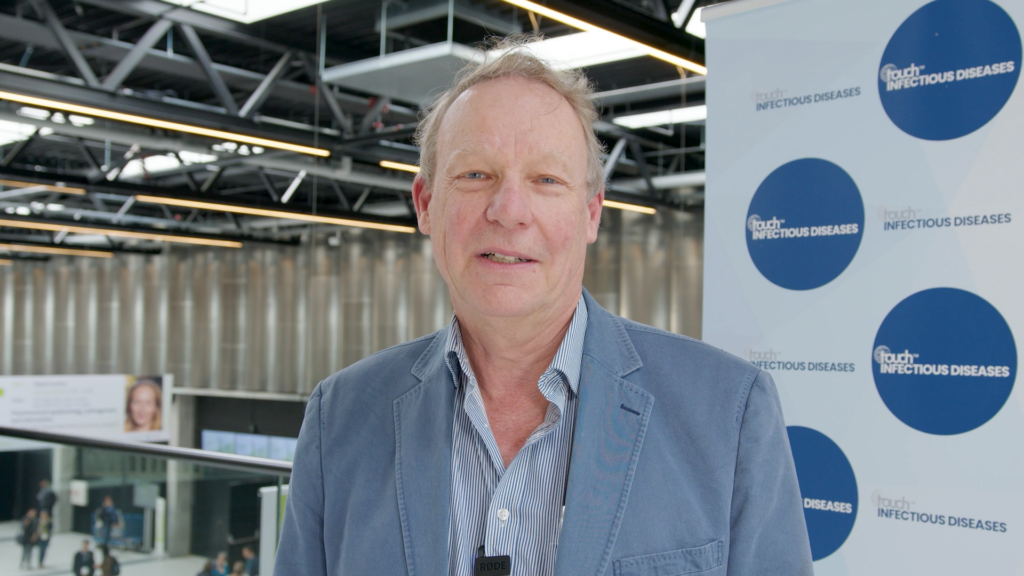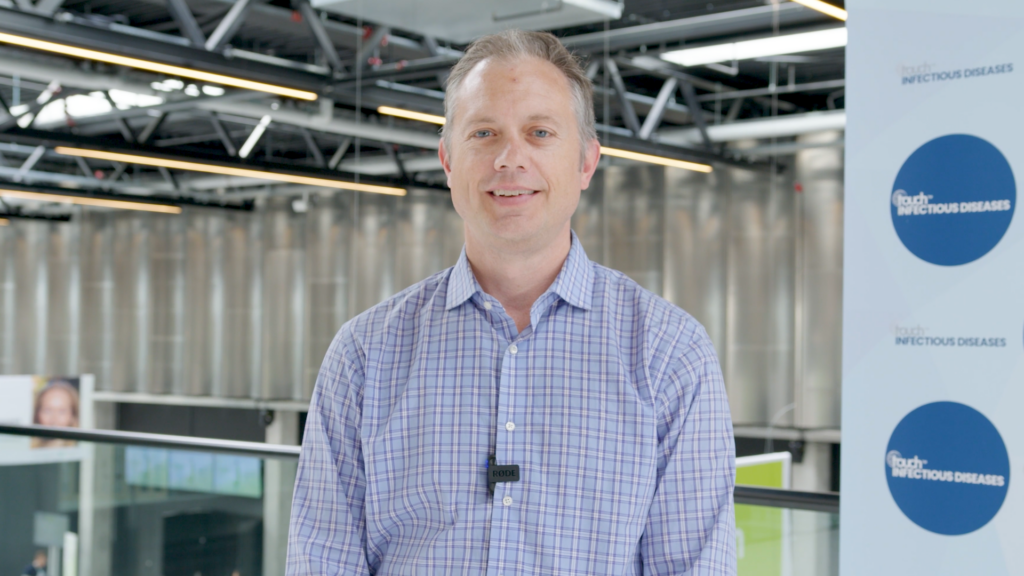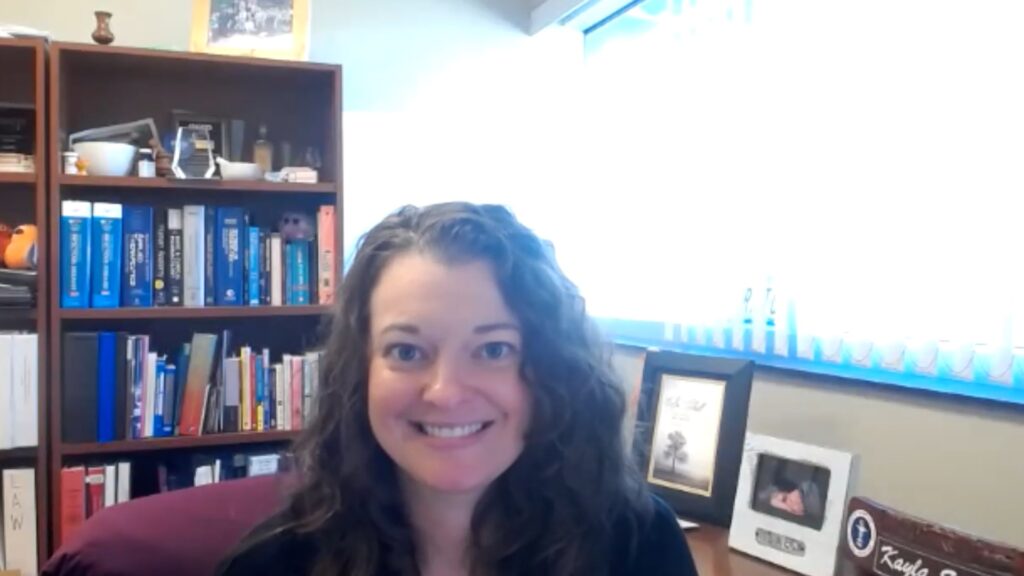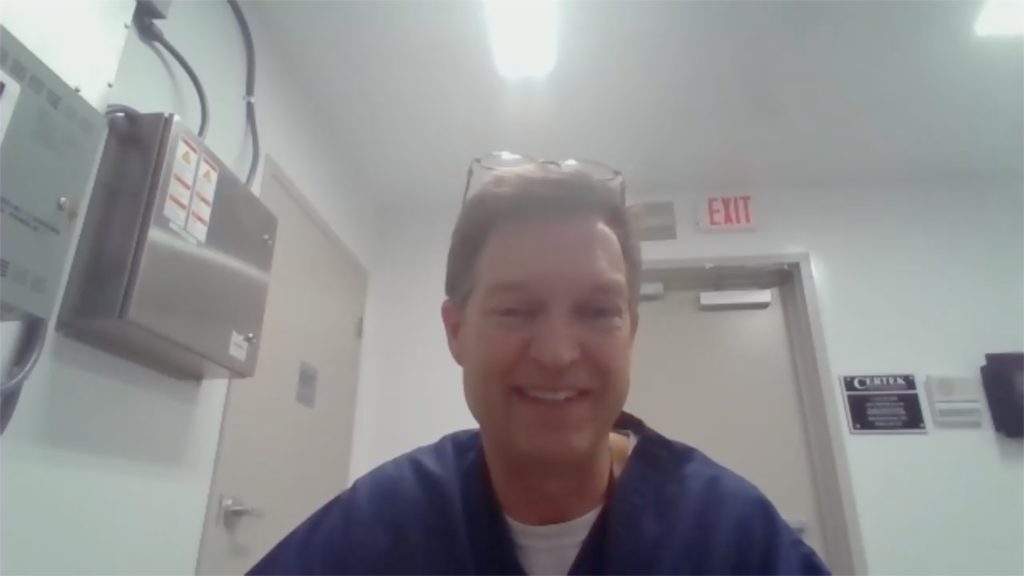Chronic pulmonary aspergillosis (CPA) is a complicated respiratory disease associated with high morbidity and mortality rates. This overlooked disease often comes with delayed diagnosis and treatment, demonstrating a need for increased awareness and education in this area. We met with Prof. David Denning (The University of Manchester, Manchester, United Kingdom) to discuss the current state of diagnosing and treating CPA, including co-infections with non-tuberculous mycobacteria and strategies for increasing physician awareness.
‘What’s new in diagnosis and treatment of chronic pulmonary aspergillosis’ (Meet the expert session: ME025) was presented at ECCMID 2023, 15-18 April, 2023, Copenhagen, Denmark.
Questions
- What are the most significant challenges in diagnosing and treating chronic pulmonary aspergillosis (CPA)? (0:26)
- What is the current standard of care for treating CPA, and what treatment advancements have emerged recently? (1:27)
- Can you describe the interplay between CPA and co-infections with non-tuberculous mycobacteria? How does the treatment approach differ when treating patients with both conditions? (2:44)
- In your experience, what are some of the key factors contributing to the high morbidity and mortality rates associated with CPA, and how can these be addressed? (4:22)
Disclosures: David Denning and family hold Founder shares in F2G Ltd, a University of Manchester spin-out antifungal discovery company, and share options in TFF Pharma. He acts or has recently acted as a consultant to Pulmatrix, Pulmocide, Biosergen, TFF Pharmaceuticals, Pfizer, Omega, Novacyt, Rostra Therapeutics, MucPharm and Cipla. He sat on the DSMB for a SARS CoV2 vaccine trial, chairs a Data Review Committee for Pulmocide and as Phase 1 Medical Monitor for Biosergen. In the last 3 years, he has been paid for talks on behalf of Hikma, Gilead, BioRad, Basilea and Pfizer. He is a longstanding member of the Infectious Disease Society of America Aspergillosis Guidelines group, the European Society for Clinical Microbiology and Infectious Diseases Aspergillosis Guidelines group and recently joined the One World Guideline for Aspergillosis.
Support: Interview and filming supported by Touch Medical Media Ltd. Interview conducted by Katey Gabrysch and Victoria Jones.
Filmed in coverage of the 33rd European Congress of Clinical Microbiology & Infectious Diseases.
Click here for more content on fungal infections and here for respiratory infections. For further ECCMID 2023 highlights visit here.
Transcript
What are the most significant challenges in diagnosing and treating chronic pulmonary aspergillosis (CPA)? (0:26)
So chronic pulmonary aspergillosis is a slow, relatively quiet infection of the lungs, which looks very like tuberculosis. So if you just have a chest X-ray and a patient is coughing or feels unwell, then many, many people around the world will say that’s TB and they’ll treat for TB. In fact, we’ve probably around 15% to 20% of patients who haven’t got confirmed TB but look like they’ve got TB actually have aspergillosis and they need antibody testing for Aspergillus. They need a CT scan if it’s possible to do that, because a fungal ball or the cavity that’s found in these lungs is often very much clearer on a CT scan, than a chest X-ray and fungal culture is helpful as well in terms of the growing a fungus and knowing that you’ve got a fungal infection.
What is the current standard of care for treating CPA, and what treatment advancements have emerged recently? (1:27)
Chronic pulmonary aspergillosis is almost always treated with antifungal therapy. There’s a very small group of patients who have very stable disease and don’t need therapy, and they remain stable for some time, although they need monitoring. And there’s another even smaller group who have disease on only one side of the lung, and that can be taken away surgically. And so they, that’s a group called single simple aspergilloma and they can be removed surgically. The majority get treated with long term antifungals, and the choice is itraconazole or voriconazole. If those two are unsuccessful or not tolerated by the patient, then we tend to use posaconazole. So, some people have started to use sertaconazole, but actually there’s very little data supporting its use, although we would expect it to be effective. Unfortunately, on therapy, some of the patients develop resistance and that occurs in between 10% and 15%, maybe as high as 20% and so that group of patients at the moment have to either stop therapy or have to go on IV therapy. And given that we have to treat these patients for many months or years IV therapy, for months or years is very difficult for many of those patients.
Can you describe the interplay between CPA and co-infections with non-tuberculous mycobacteria? How does the treatment approach differ when treating patients with both conditions? (2:44)
Almost everybody who develops chronic pulmonary aspergillosis or CPA has had a lung insult of some type before. So they’ve had a pneumothorax, they’ve had surgery in their lungs, they’ve got COPD, TB, and one of those insults is NTM or non tuberculous mycobacteria. You can have CPA before an NTM infection, at the same time as an NTM infection or after an NTM infection. And the Koreans have followed this fairly carefully. And in the group that have aspergillosis after NTM infection, after about five years, 5% to 6% of patients develop it. And so it’s important to monitor these patients. And consider whether they have one or two therapies. We’re also seeing a small number of patients who have TB and CPA together, which is a very challenging treatment problem. NTM infections are treated with multiple antibiotics, usually including rifampicin or rifabutin that interacts with all the azole antifungal drugs. And so it’s really tough to treat these two infections together. And usually what’s required is to use a posaconazole because it’s less interactive than the other anti-azoles also adds a much larger dose of that, and that’s achievable in countries that have enough resource, but it’s absolutely unachievable in many parts of the world where TB is more common, rifampicin is more often used, and they can’t afford posaconazole.
In your experience, what are some of the key factors contributing to the high morbidity and mortality rates associated with CPA, and how can these be addressed? (4:22)
CPA or chronic pulmonary aspergillosis can be a lethal disease. If you are hospitalized with it, then data from France and other countries suggests that around 20% of patients die within the first month or two months of going into hospital. If it’s diagnosed earlier and the patients are not quite as sick and they treat as an outpatient. The mortality is less than that. But over five years for those that are diagnosed, nearly half the patients do eventually die. Now, these patients usually coming first to care in their late fifties, ’60s or seventies, and they usually have competing other problems. A longstanding lung disease is one of those with severe COPD, for example. But patients have heart disease and some of them have had cancer before. And so on. So not all those deaths are related directly related to CPA, but some of them are. What are the key parameters to improve outcomes, early diagnosis and not misdiagnosis or mistreatment for months or years with something which isn’t appropriate is one major issue. If the patients cough up blood, which they relatively frequently do, then dealing with that with embolization, for example, or even surgery is also important. And if patients who start to not respond or never respond to therapy, then switching therapy, looking for actively for resistance. And occasionally we’ve also used gamma interferon therapy as a way of boosting their immune system, because many of these patients have subtle immune defects, which and one of those is, is a gamma interferon deficiency or an IL-12 deficiency. So, it’s a challenging disease. And for the doctors looking after these patients, it’s not enough just to say, how do you feel? It’s really important to measure what their aspergillosis antibodies doing. Look at the x-rays, see if they still have positive cultures because it’s such a quiet disease that you can be fooled into thinking that everything’s fine when it’s not fine.
Subtitles and transcript are autogenerated.

